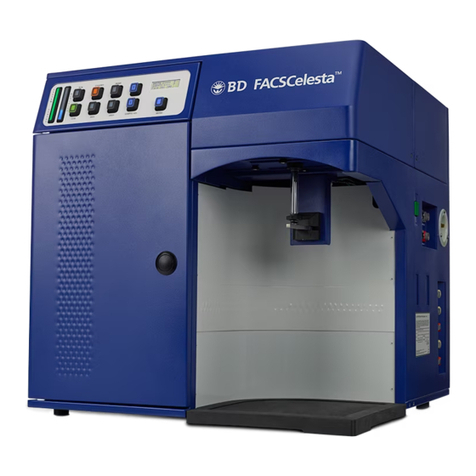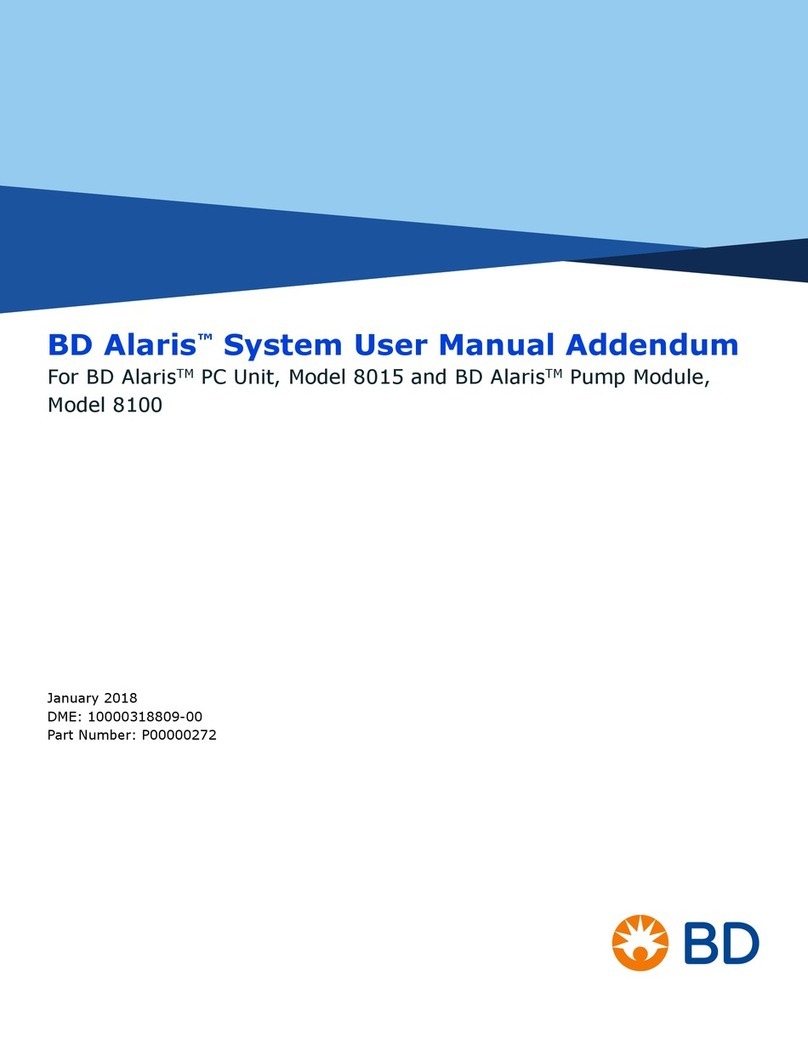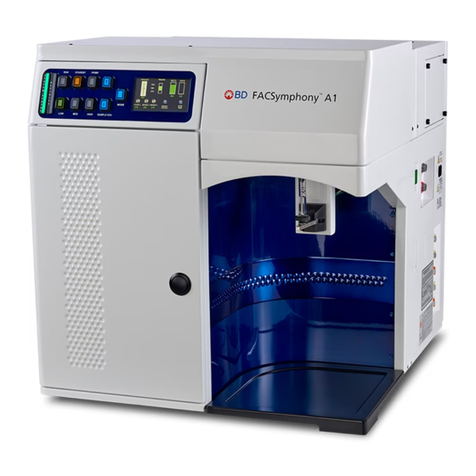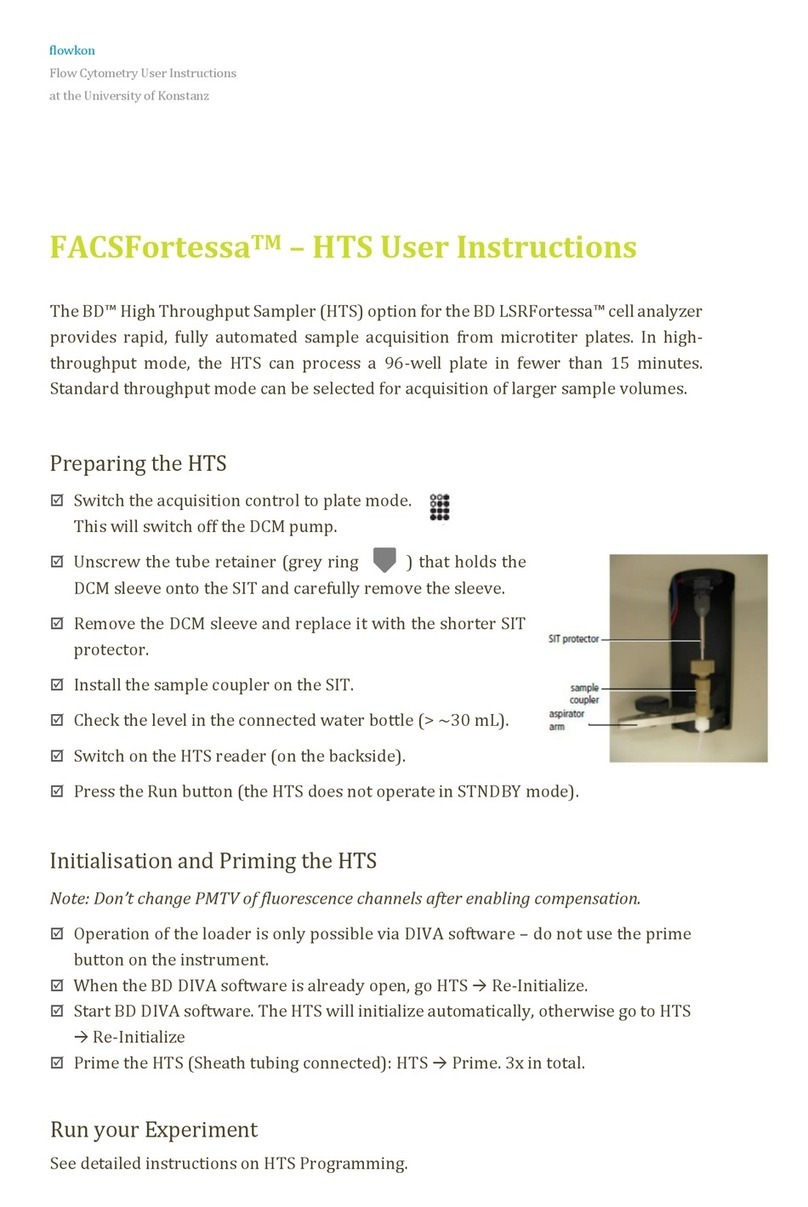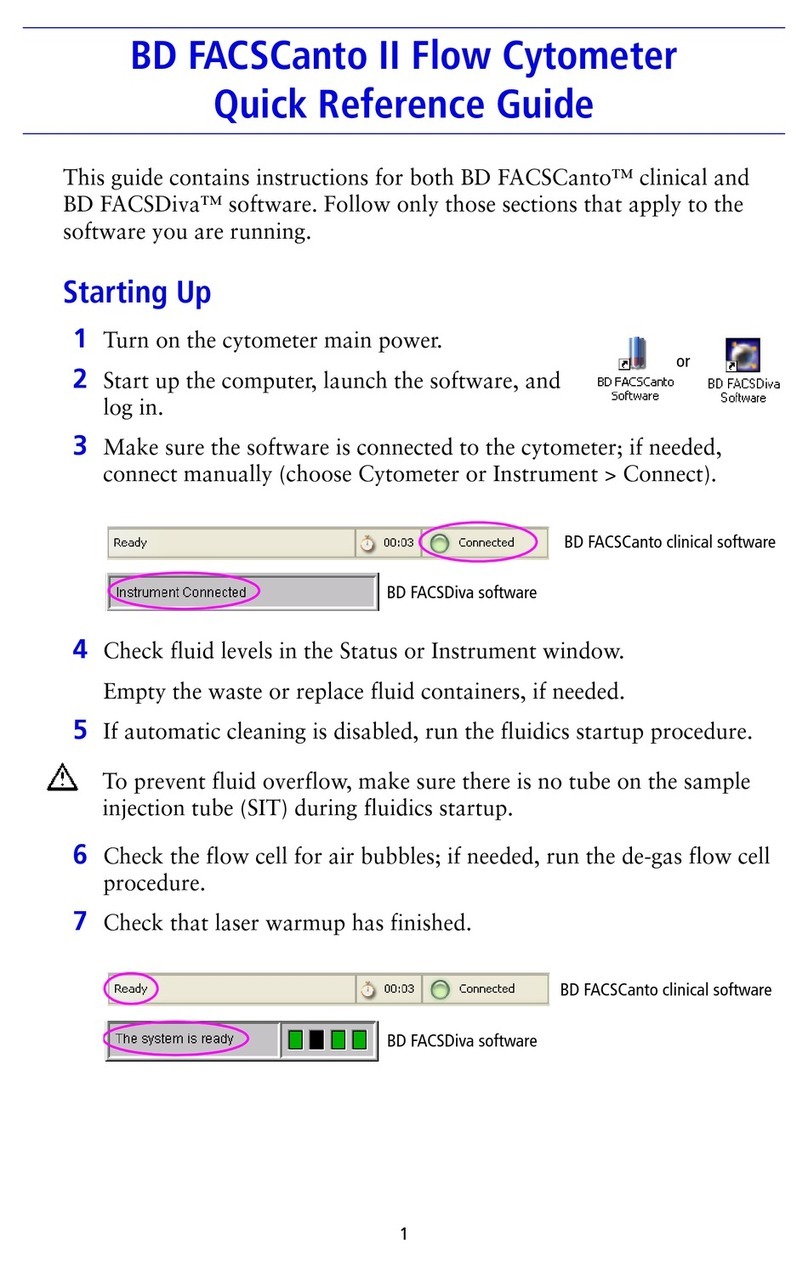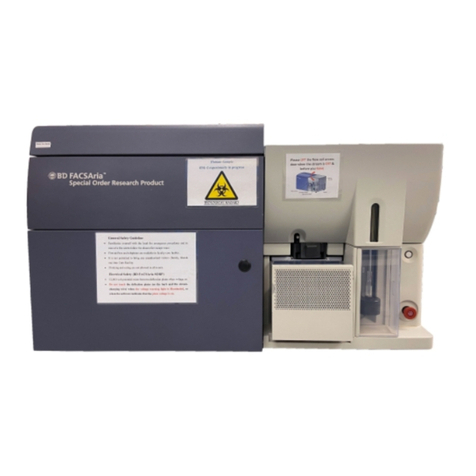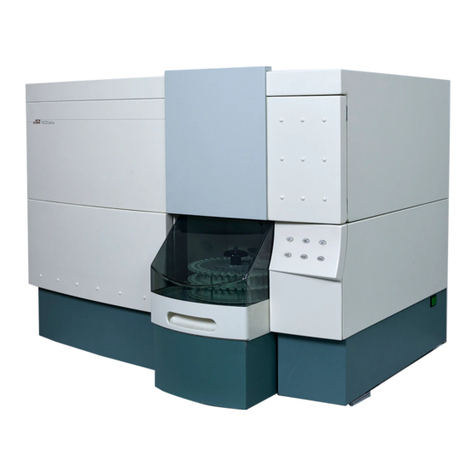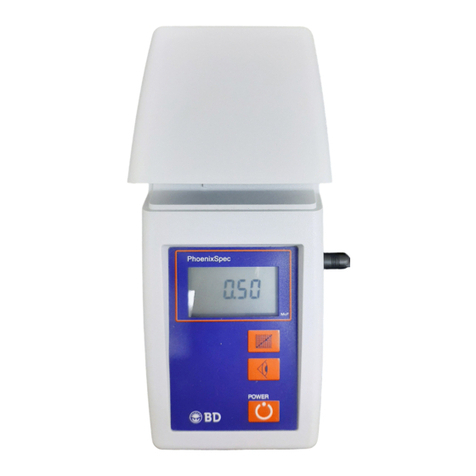
iii
Draft Copyright
BD Biosciences • 2350 Qume Drive • San Jose, California
• 95131-1807
© 2002 Becton, Dickinson and Company. All rights reserved. No part of
this publication may be reproduced, transmitted, transcribed, stored in
retrieval systems, or translated into any language or computer language,
in any form or by any means: electronic, mechanical, magnetic, optical,
chemical, manual, or otherwise, without the prior written permission of
BD Biosciences, 2350 Qume Drive, San Jose, CA 95131, United States of
America.
BD Biosciences reserves the right to change its products and services at
any time to incorporate the latest technological developments. Although
this guide has been prepared with every precaution to ensure accuracy,
BD Biosciences assumes no liability for any errors or omissions, nor for
any damages resulting from the application or use of this information.
This workbook is subject to change without notice. BD Biosciences
welcomes customer input on corrections and suggestions for
improvement.
Apple Computer, Inc. makes no warranties whatsoever, either express or
implied, regarding this product, including warranties with respect to its
merchantability or its fitness for any particular purpose.
Macintosh, Apple, and the Apple logo are registered trademarks of Apple
Computer, Inc.
Teflon is a registered trademark of E.I. du Pont de Nemours and
Company.
AlignFlow and Texas Red are trademarks of Molecular Probes, Inc.
FlowJo is a trademark of Tree Star, Inc.
BD CaliBRITE, BD CellQuest, BDFACS, BD FACSCalibur,
BD FACS Clean, BD FACStation, BD FACS Rinse, BD FACSVantage, and
BD Falcon are trademarks of Becton, Dickinson and Company.
For Research Use Only. Not for use in diagnostic or therapeutic
procedures.
